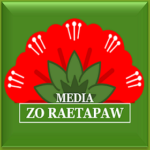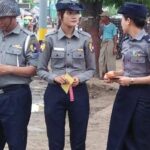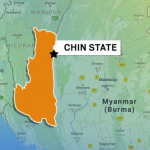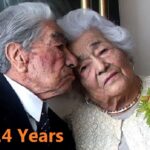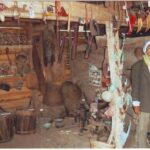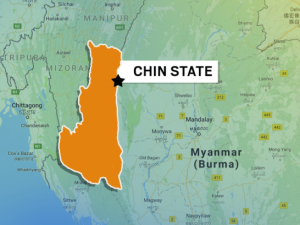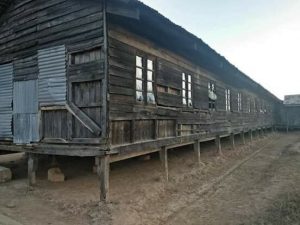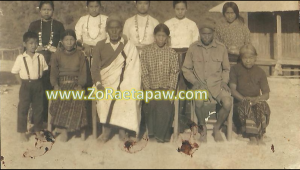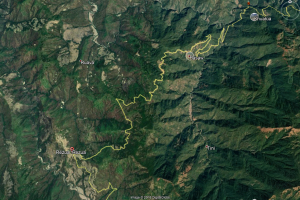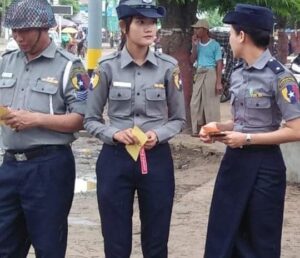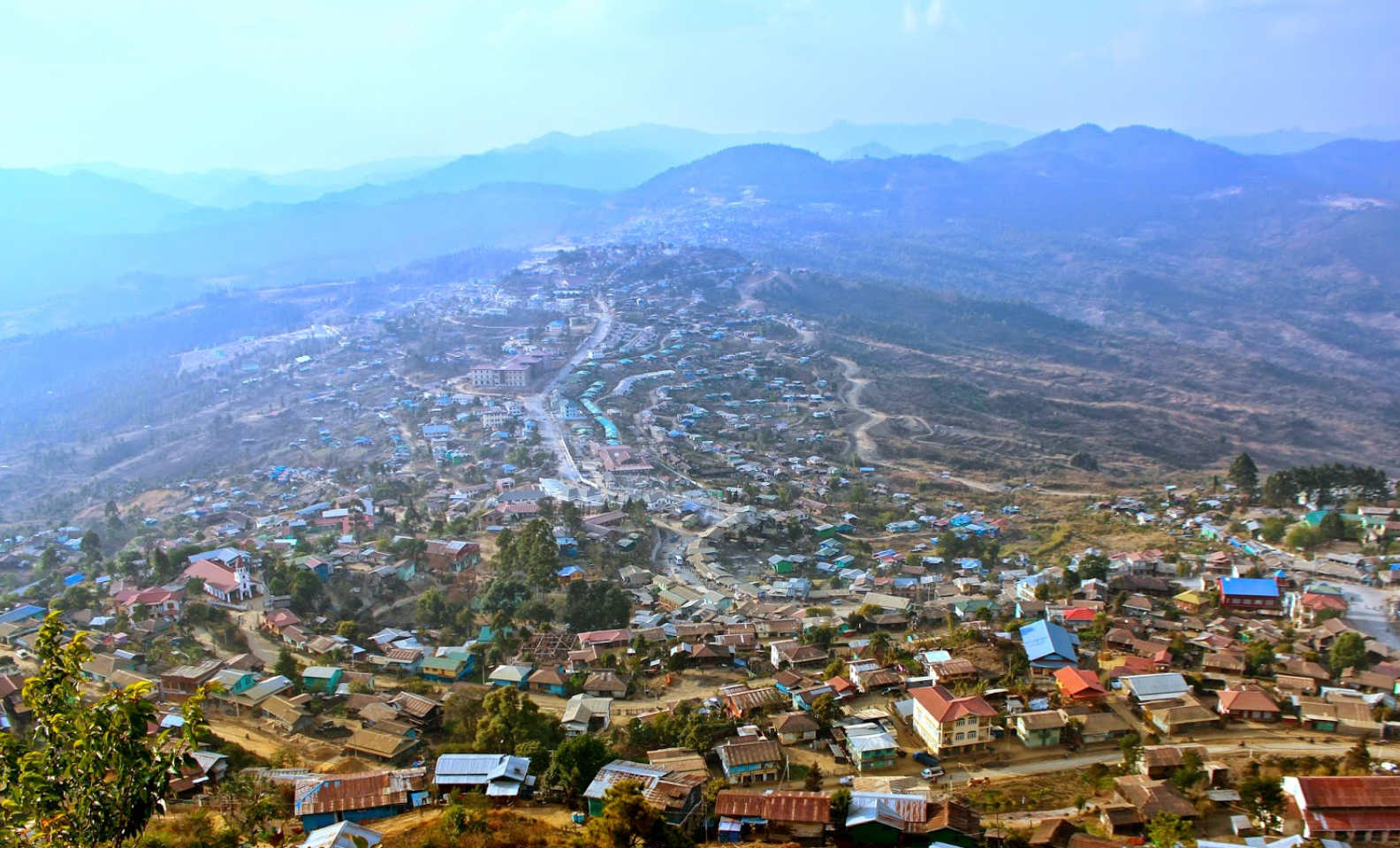
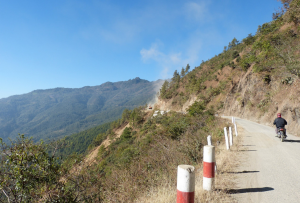 2. LAIMI
2. LAIMI
Completely legendary in origin and nature, Laimi is “people issued from Lailun cave”. Around 1400 AD the origins of Laimi fell into three categories of which two were from Falam, the prime origins, and one from Haka. The Haka origin was indistinct but could reasonably be assumed to have been imported from Falam to the effect that it, too, is essentially mythical in nature.
(i) The Haka Laimi – Denizens of Haka only
Rev Sang Ling of Haka told a committee: ” LAI was first used by denizens of Hakha (Village). It means our village people, our own local people, as distinct from outsiders.” Rev Sang Fen affirmatively seconded “I agree”. (Constitution Drafting Committee, Falam, Oct-Nov 1952) This is the origin of how Laimi came about in Haka.
Rev Sang Ling and Rev Sang Fen were the most senior and most revered pastors and customarily they were the authority in Haka area. They knew only too well what LAIMI originally meant and who were or were not included. They agteed that LAIMI was not collectively inclusive of all the races in Haka but circumscribed only a limited small community, i.e. denizens of Haka village. Pu Sang Fen knew too well that he himself was essentially excluded from being a LAIMI as he was from Zokhua. On that basis the elite duo declared “Lai is not our national name” ibid.
(ii) The Falam Laimi
(a) Issued from Lailun cave – the prime origin of Laimi
A legend traditionally held by elders of the Falam area was that a cave called Lailun near Falam, was the origin of mankind, hence the birth of Laimi in general.
In 1983, the late Pu No Zam, one time Member of Parliament for the Falam area, remarked that Laimi, in the contextual sense of the word, originating from Lailun cave, is ‘localised’, referring only to those inhabiting the close proximity of the cave. Falam Laimi, according to him, is not inclusive of all in Falam in exactly the same way as Laimi is not in Haka area.
The two senior pastors from Haka in 1953 and a wive man from Falam 30 years later consistently and unequivocally confirmed the parochial nature of what Laimi stood for in Falam and Haka. Laimi, therefore, is only local and partial, but neither inclusive nor national.
(b) Issued from a rock at Rua Van
According to Dr E H East, 1909: “in Rua Van village, I saw a big mountain from which they tell me issued the first man and woman ….. to me the story is very interesting, though faulty, of the first human couple ….. “Lai Mi”, they claim that around them centres the early history of mankind. I was led by the Chief and Village elders to a huge rock. They showed the very spot in this large rock from which the first man and the first woman in the world issued”. (Dr East, Burma Manuscripts, p 168-169) “Faulty” he remarked, No such thing never happened in a real-world situation.
Non-Laimi
History proves the majority are not from Lailun cave, and therefore, are not Laimi.
1. In 1967, Pu Pak Ling, of Suntla near Lailun cave, related to the High School Science Students Excursion Team how the Falam and Haka people came about. “In the wake of the death of the Sawbwa at Kalemyo, a dispute arose among his five sons, resulting in a feuding power struggle in the palace – the three older brothers against the two younger brothers. The younger brothers gained the upper hand sending the three big brothers to flee the hills. The oldest son was Tun Khain (Thua Kai) whose descendants today are residents of Zammual, Congheeng, Suntla and Tlaisun village. The middle was Phulone (Phurlum) whose descendants are the Zanniat tribe and the youngest of the tree, Hlun Soing (Hlawn Ceu) who begot the Mangkheng, Zahau and Haka tribes’.
This historical record shows that the majority of Falam’s population and the Hakas are not Laimi because they did not “come out of Lailun cave” but are descendants of the three exiled princes.
2. Dr Bawi Hu, rtd. Township Education Officer, wrote that Pu song Za led a group of people from Kalemyo to the hills via Locom and their descendants today are the people of Falam and Haka. This is further proof that generally Falam and Haka peoples are from Kalemyo and they are not originally Laimi issued from Lailun cave in perfect agreement with Pak Ling and No Zam.
This statement by Dr Bawi Hu takes to five the number of testimonies by respectable key figures, such as Rev Sang Ling, Rev Sang Fen, Pu No Zam, Pu Pak Ling and himself t confirm logically that the vast majority of the Falam and Haka people are not Laimi issued out of Lailun cave but progeny of those emigrating from Kale Plains to the hills.
Accordingly, Rev Sang Ling and Rev Sang Fen declared: “Lai is not our National Name”.
Reiterating the inferences — the denouement on Chin and Laimi
This summaries the these points to show that calling us Chins or Laimi is incorrect.
Chin
- (a) Originally a myth by nature. ‘Chin’ originated on the belief that people emerged from the bowels of the earth, out of a rock called ‘Chinlung,’ It is pure fantasy built on paganism. Paganism is unacceptable to Christian faith and principles and therefore if they consider themselves as Christians. It can be inferred that Chin is not suitable for their national identity.
- (b) Chin is an alien name used by their Burmese neighbors. Chin,inscribed on stones at Pagan is only proof that the Burmese kings called them by that name in the Pagan era and nothing else beyond that.
- (c) All colonial and post-colonial writers agreed with one accord, “the tribes never call themselves Chin but reject it”. They call themselves Zo (Yo/Jo/Dzo)”. While evidence is mounting to confirm that they are Zo, for what gain do some stoop so low as to ingratiate themselves with their neighbors and choose to adopt what the neighbors call them instead?Doesn’t it sound like a coward betrayal of their own people?
- (d) Moreover, the Britist Government who designated them as Chin, in admission of ‘Chin’ being a mistake, officially declared “Had the word Chin been changed to Zo at that time, the right word for calling the various tribes and clans of the Zo … would have been answered a long time” They have been wrongly identified as Chin.
Laimi
- (A) LAIMI of Haka: (a) According to Rev Sang Ling and Rev Sang Fen “LAIMI was first used by denizens of Haka only as distinct from outsiders’. Therefore, logically speaking, it can be inferred that LAIMI of Haka does not represent Zo miphuin such as Zotung, Zophei, Senthang, Mara and Lautu, let alone Tedim, Thantlang, Matupi, Mindat, Kanpelet, Paletwa and the majority of Falam. It’s in fact an exclusive term not commonly shared. (b) On that ground, Rev Sang Ling and Rev Sang Fen jointly declared “Lai is not our national name”. They were the authority in Haka in those days. So their word can be taken with confidence. (c) As it can be inferred that Haka Laimi came from Falam Laimi, it too, has its origin based on mythology thereby disqualifying itself to represent a Christian nation.
- (B) LAIMI of Falam: (a) Laimi refers only to the people inhabiting the immediate vicinity of Lailun cave (No Zam) excluding the majority of the populace in Falam area, needless to say the rest of the tribes. (b) In the above “Non-Laimi” section, (p 6) Pu Pak Ling and Pu Bawi Hu, further confirmed that, the majority of the populace in Falam area, such as Zanniat, Suntla, Tlaisun, Congheeng Zahau, Zammual, and the mangkheng tribes and the Hakas are not Laimi as their ancestors ‘were not issued from Lailun cave’ but were refugees from Kalemyo. (c) Now, it can be clearly seen that all in all Laimi of Haka and that of Falam represent only a handful local tribes i.e. those denizens of Haka village and those around Lailun cave. This had been testified by Rev Sang Ling, Rev Sang Fen, Pu No Zam, Pu Pak Ling and Dr Bawi Hu. LAIMI therefore, cannot collectively identify them all as a people. (d) Lailun, the principle cave from which the Laimi was believed to come out, was founded only lately around 1400 AD, after their forefathers had fled to escape the futhless Sawbwa, in Kalemyo. It was, therefore, too recent in chronological order in history, missing out much of their rich history prior to that time. The word Lai did not appear in History prior to the settlement at Lailun Cave around 1400 AD. In other words, it lacks primordial originality, a quality prerequisite for acceptably genuine historical identity. (e) Laimi does not stand on a single firm foundation but loosely on different imaginary footings, each contradicting one another like, “first used by Haka denizens alone” – (SL & SF), then “out of Lailun cave”- (elders of Falam), and “out of rock of a mountain near Ruavan” – (Headman and elders of Rua Van – Dr East.) The credibility of the etymology of Laimi itself is questionable to the core. (f) Laimi, based on mythology, is not real. Dr East described it, “faulty” and admitted “I have some difficulty in accepting their story as accurate” (Burma Manuscripts p 169). The mythical origins based on paganism make Laimi, like Chin, equally unacceptable as opposed to Christian principles.
Khuul-aa-piang
The people of Tedim also have a similar legend. A cave called, ‘Khuul’ near Saizang was thought to be where people were issued, calling themselves “Khuul-aa-piang”, (Born of Khuul), just about the same time as Laimi was thought to be issued out f Lailun cave. However, it is only a myth, they do not embrace it as their true origin. They persistently cling to Zo, as a symbolic continuity down through the ages over the past 20 centuries to this day.
Since “Khuul-aa-piang” refers only to the people of Tedim, and “Laimi” refers only to a minority in Falam and a handful Haka village, these two terms fail numerically to represent all of them. Moreover, they are products of paganism in direct contrast to the affirmation of God’s creation of mankind.
- What is most striking is the fact that the people Prof Lehman, Rundall, Tuck & Carey, H N C Stevenson and other scholars discovered to be Zo People actually were the Zomiphuin (Zo tribes) of Haka, who are now scottered over Thantlang, Matupi, Kanpelet and even parts of Paletwa.
This Article Received From, and Credit to: Dr.J. Suan Za Dong, Sydney, Australia
